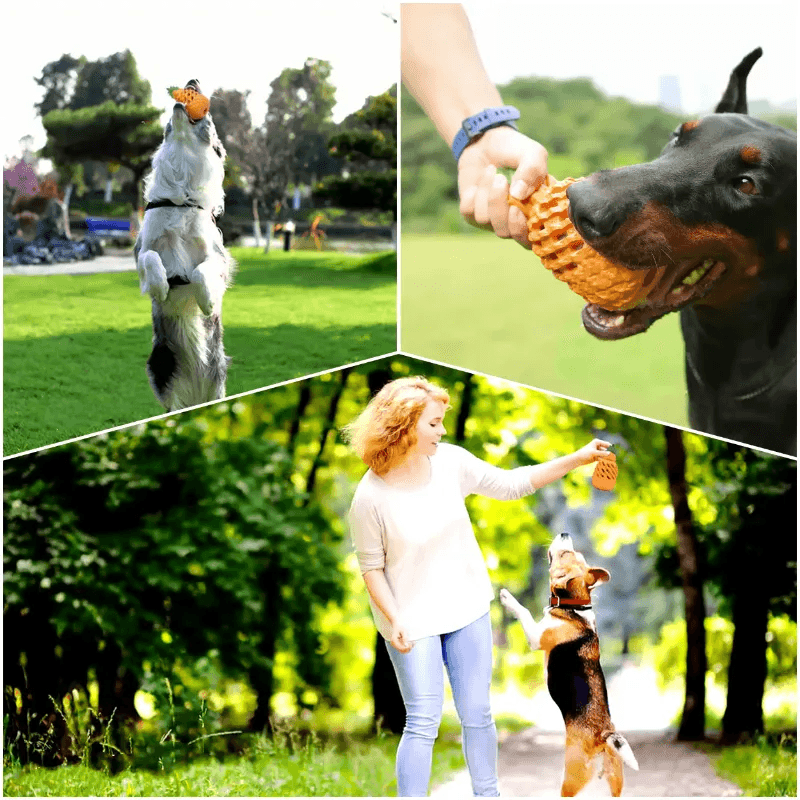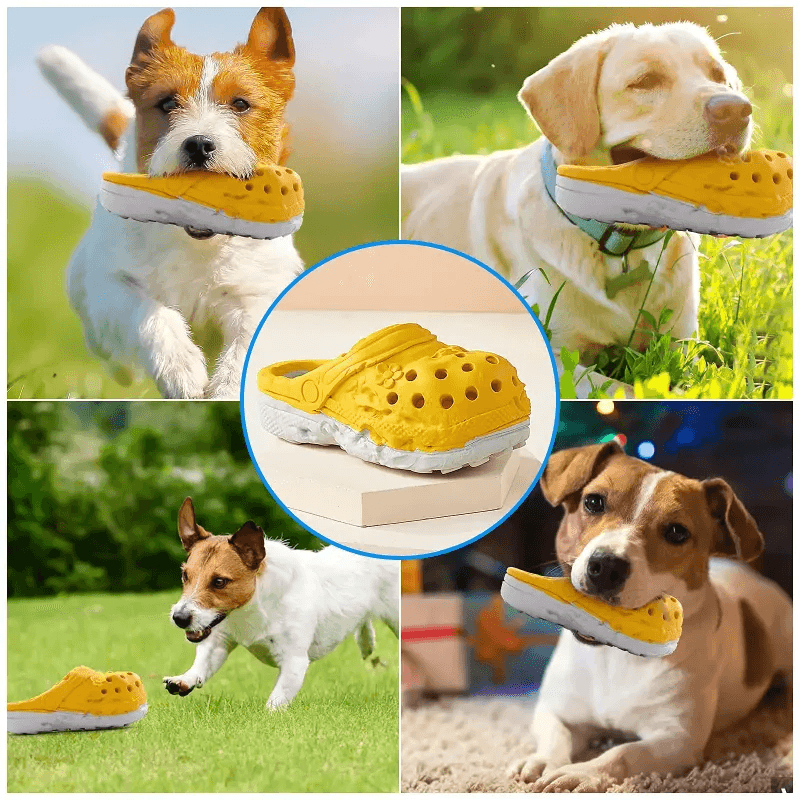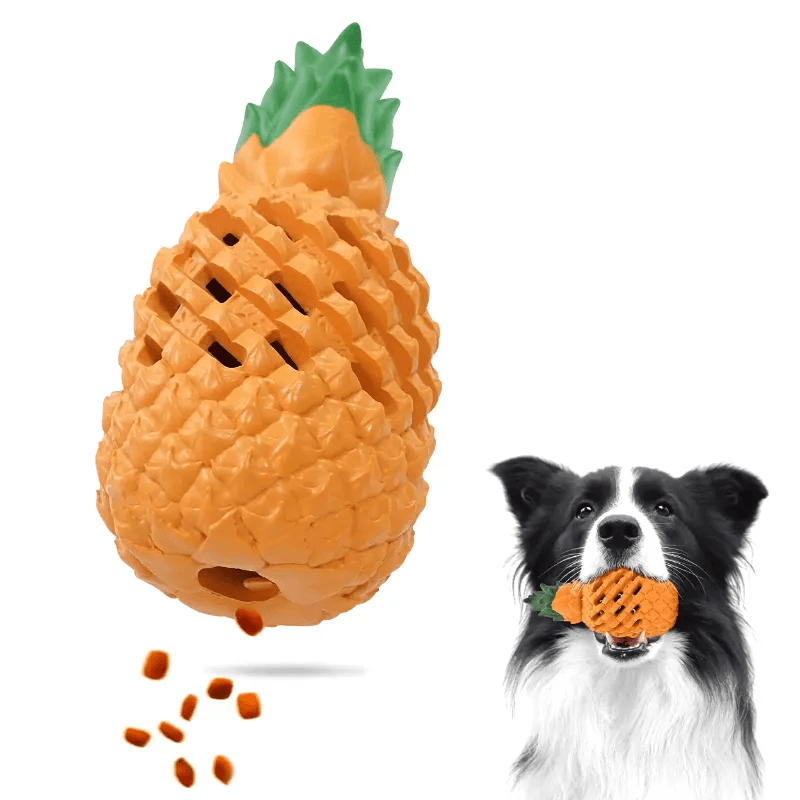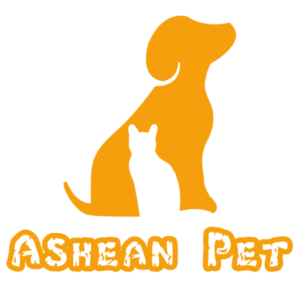Keeping Your Dog Stimulated - Tips for a Happy Pet

Since dogs have such sharp minds, it's important to give them mental exercise to keep them from developing behavioral issues stemming from boredom. After all, your dog may start using their intelligence for unpleasant things—like chewing your slippers or ripping up your couch—if their mind isn't engaged in something productive. If your dog is not happy, it can engage in:
- Destructive chewing when you’re gone
- Excessive barking
- Aggression
- Howling
- Acting restless
- Fighting with other pets
As a dog owner, this can be really distressing. To prevent this, you need to keep your dog mentally stimulated. Whether it’s a dog chew toy or a hike in the woods, there are various ways to keep your furry friend happy. In this article, we’ll explore practical ways to stimulate your furry friend.
Why Keep Your Dog Mentally Stimulated? The Importance of Mental Stimulation for Dogs
In this section, we’ll look at why you need to keep your dog mentally stimulated. Here are a few reasons why your dog must be mentally stimulated:
1. Preventing boredom and behavioral issues in dogs
If you want to keep your dog’s well-being, you’ll need to keep it from boredom. Unpleasant habits like destructive chewing, excessive barking, and even violence, can come from boredom. Owners can successfully prevent boredom and limit the development of such behavioral disorders by giving enough mental activity.
Dogs that have little cerebral stimulation or opportunity for physical exercise frequently become bored. Dogs are innately curious and intelligent. Therefore, they may decide to destroy things to pass the time when they are bored. Dogs who exhibit signs of boredom may pace, lick excessively, get restless, or engage in attention-seeking activities.
2. Fulfilling your dog’s instincts
Satisfying a dog's innate desires helps with its general well and contentment. Since they are descended from wolves, dogs still exhibit many of their traits. It is essential to recognize and satiate these instincts. This allows you to provide our dogs with a happy and meaningful existence.
Given their innate tendency to build social relationships and establish hierarchies within their social group, dogs are pack animals by nature. Dogs in domestic environments seek out engagement and companionship from their human family, which they consider to be their pack. Dogs are naturally inclined to investigate their surroundings and look for food. This innate habit takes the form of scavenging, digging, and sniffing. Dogs' mental and emotional health depends on them participating in activities that let them employ their senses and satiate their curiosity.
3. Enhancing cognitive function
Learning, comprehending, and applying information are referred to as cognitive functions. Dogs benefit from mentally stimulating tasks that test their minds, just like people. Dogs get cerebral exercise from regular training sessions and cognitive games, which teach them new skills, tricks, and orders. Dogs that receive training are more cognitively engaged, have better focus and concentration, and have stronger bonds with their owners. Activities involving scent, such as tracking or scent identification, test their cognitive abilities while utilizing their innate sense of smell.
Dogs are more likely to adapt, solve problems, and learn when they are exposed to new situations, people, and stimuli. Cognitive flexibility and mental agility are enhanced when dogs are taken on walks in new places, explored, or engaged in novel activities. Additionally, giving toys a regular rotation keeps dogs from getting bored and motivates them to explore and engage with new stimuli using their cognitive abilities.
4. Strengthening the bond with your dog
Dogs are extremely sociable creatures who have a deep desire to bond with their human friends. Building a solid, enduring relationship with your dog requires you to strengthen the tie between you and your pet. This may also become gratifying for both of you.
Regular engagement between you and your dog—whether it's taking walks, playing games, snuggling on the couch, or just hanging out—strengthens your emotional attachment. You may spend uninterrupted time with your dog by scheduling specific times each day. Activities such as playtime, grooming, or training sessions encourage engagement.
5. Alleviating stress and anxiety
Like people, dogs can become stressed and anxious for a variety of reasons. These include changes in their surroundings, being apart from their owners, loud noises, being in strange places, and social interactions. Prolonged stress and worry can adversely affect dogs' physical and emotional well-being.
You can make your dog feel more at ease, self-assured, and content in their everyday lives by:
- Providing mental and physical stimulation
- Building a consistent schedule
- Offering a supportive environment
- Employing calming techniques and products, and
- Getting professional treatment when necessary.
6. Promoting health and longevity
With mental stimulation, you can keep your dog engaged, and its thoughts active, and prevent boredom. Dogs that receive stimulation from interactive play, training, and puzzle toys can avoid cognitive decline in old age. This helps to preserve cognitive health. Dogs who receive mental stimulation also enjoy happier, healthier lives. This is because it prevents behavioral problems and encourages physical activity. Also, it deepens ties with their owners and lowers stress.

Ways of Keeping Your Dog Mentally Stimulated
Below, we provide practical steps to keep your dog active and engaged. Here are a few!
1. Understand your dog’s needs
It's critical to comprehend your dog's demands. This allows you to give them the atmosphere, care, and attention they need for their general well-being. Dogs need their owners to pay attention to and understand their more complicated emotional and social needs. This is separate from their fundamental needs, which include food, water, and shelter.
To find your dog's ideal diet, speak with a veterinarian. Also, make sure your dog has enough food and water each day. Make sure your dog has access to enough shelter as well as the outdoors so they can exercise.
When your dog requires emotional stimulation, it's also useful to understand its wants and characteristics. You can better understand how it plays and interacts when you have a deeper understanding.
2. Engage in interactive play
Dogs are naturally playful animals. Therefore, engaging them in games helps them expend energy. Engaging in interactive play with your dog is effective in keeping them mentally stimulated. There are several kinds of games you can play with your dog. These include:
- Fetch
Here’s how to play this game:
- Start in an open space, such as a park or backyard.
- Give your dog a ball, frisbee, or another object.
- Tell the dog to bring it back to you so you can do it again.
- Tug-of-War:
Follow these steps to play tug-of-war:
- Use a sturdy rope or tug toy.
- Hold one end and encourage your dog to grab the other.
- Engage in gentle tugging, letting your dog win occasionally.
- Hide and Seek:
How to play hide and seek with your dog::
- Start with your dog in a sit-stay.
- Hide somewhere in your home or yard.
- Call your dog's name and wait for it to find you.
- Interactive Toys and Puzzle Games:
Here’s how to play this game with your dog:
- Use puzzle toys or treat dispensers.
- Fill them with treats or kibble.
- Encourage your dog to figure out how to access the treat
- Agility Courses:
How to Play:
- Set up an obstacle course with items like cones, tunnels, and jumps.
- Guide your dog through the course with treats or toys.
- Practice different challenges and reward your dog's progress.
- Flirt Pole:
Here’s how to play flirt pole:
- Attach a toy or lure to a long pole.
- Move the pole around to mimic prey.
- Encourage your dog to chase and catch the toy.
- Treasure Hunt:
Follow these steps to play a treasure hunt:
- Hide treats or toys around your home or yard.
- Encourage your dog to search for them using their nose.
- Reward them with praise or more treats when they find them.
- Find the Toy:
How to play find the toy:
- Start with your dog in a sit-stay.
- Show them a favorite toy.
- Hide the toy somewhere nearby and release your dog to find it.
- Water Games:
Here’s how to play water games:
- If your dog enjoys water, play games like fetch in a shallow pool
or lake.
Throw toys for them to retrieve and encourage them to swim.
- Nose Work:
How to play nose work:
- Hide treats or toys around your home or yard.
- Encourage your dog to use their nose to find them.
- Start with easy hiding spots and gradually increase difficulty.
3. Carry out dog training sessions
Training sessions are a great way to keep your dog obedient and comfortable in its environment. For younger dogs, this is very important as they grow bigger. Here are some tips to keep your dog active through training sessions:
- Establish Goals:
Choose the skills or actions you wish to teach your dog throughout the training session. Having precise goals will direct your training approach, whether it's teaching your dog basic commands like sit, stay, and come, or tackling particular behavioral issues like jumping or yanking on the leash.
- Divide Tasks:
Divide each desired behavior or ability into more doable, smaller steps. As your dog advances, start with easier tasks and progressively increase the level of difficulty. By taking little steps, you and your dog may avoid frustration and give your dog the best chance to succeed.
- Reduce Distractions:
When conducting training sessions, choose a calm, distraction-free setting, particularly for teaching new commands or behaviors. Select a well-known indoor place or a fenced outdoor area where your dog won't be unduly distracted by outside stimuli while they are training.
- Guarantee Safety:
Ensure that the training space is risk-free and uncluttered to prevent distractions or hazards that could disrupt the session. Get rid of any toys, food, or other pets that can endanger your dog or divert their attention.
Other Tips for Dog Training
1. Gather all required training equipment and snacks or toys to use as rewards.
2. Apply strategies for positive reinforcement, giving praise for appropriate conduct right away.
3. Follow a strict schedule, working your way up from the fundamentals.
4. Keep sessions brief and close on a high note. Sessions should not be longer than ten to fifteen minutes.
5. Show your dog that you are understanding, patient, and consistent.
6. Track development and modify the training schedule as necessary.
7. Congratulate your dog on good actions.

4. Provide interactive toys
Providing interactive toys for your dog can keep them mentally stimulated, engaged, and entertained. When you're not able to interact with them directly, this is a great option. Here’s our guide on how to stimulate your dog with interactive toys:
A. Select a Variety of Toys:
Variety adds spice to your pet’s playtime. There are various types of toys you can choose for your dog. These include:
- Puzzle Toys:
Puzzle toys test your dog's problem-solving abilities and maintain mental stimulation. Treats or food that are concealed inside these toys frequently require your dog to move parts or figure out problems. Treat balls, interactive feeders, and maze toys are a few examples.
- Chew toys:
Dog chew toys encourage dental health and satiate your dog's natural desire to chew. Select sturdy dog chew toys that are resistant to severe gnawing. They should also be from safe materials like rubber or nylon. To make chewing more pleasurable for your dog, you can also get textured or scented toys.
- Tug toys:
Tug toys allow you and your dog to play together engagingly. Look for robust tug toys composed of resilient materials such as rubber or rope. Play a nice game of tug-of-war with your dog. Teach them to release the toy when you give them the command. Make sure to use positive reinforcement.
- Squeaky toys:
Your dog can get pleasure from auditory stimulation from squeaky toys. To avoid choking dangers, use toys with integrated squeakers that are safely encased. When your dog plays with squeaky toys, keep an eye on them since they can try to break the item apart or swallow it.
B. Introduce toys Properly:
Make sure your dog uses a new toy responsibly and safely. To do this, watch over their early encounters with it. Keep an eye on how they chew, if it’s a dog chew toy. You can take away the toy if there are indications of wear or damage.
When your dog shows interest in the toy, encourage them to explore and interact with it. You can reward them with praise, treats, or playtime. To help your dog associate the toy with something nice, use positive reinforcement to encourage him or her to play with it.
C. Rotate Toys Regularly:
To keep your dog interested and from becoming bored, rotate their toys regularly. To add some diversity and novelty, keep a selection of toys on hand and rotate them every few days. If it’s a dog chew toy today, you can change it to a fetch toy tomorrow. By doing this, you may prevent your dog from becoming bored with the same toys and keep them mentally occupied. Ashean Pets has a wide range of recyclable dog toys that you can explore anytime.
D. Supervise Playtime:
When your dog plays with interactive toys, you should always keep an eye on them, especially if they tend to chew or behave destructively. To avoid choking dangers, take out any damaged or broken toys right away. It is always a great idea to play with eco-friendly toys that are safe for your dog and the environment.
Keep an eye on your dog's toys' condition and replace any that seem worn out or broken regularly. Toys with loose pieces, frayed edges, or tears should be thrown away to avoid injuries or accidents.
5. Explore the outdoors
Taking your dog on regular walks and trips to new environments provides sensory stimulation. Allow your dog to explore new sights and sounds. This will prevent boredom and keep it mentally engaged. Here’s how you can use outdoor exploration to keep your dog mentally stimulated:
● Pick Dog-Friendly Areas:
Look for dog-friendly outdoor spaces where dogs are permitted on leashes. Seek for locations where your dog can safely explore and enjoy the outdoors, such as parks, trails, beaches, or dog parks.
● Take Your Dog's Needs Into Account:
When choosing outside spaces, take your dog's age, size, breed, and physical condition into account. Whether it's level ground for older dogs or rough paths for active breeds, pick settings that suit your dog's abilities and preferences.
● Pack Essentials:
Don't forget to pack a first aid kit, any necessary prescriptions or supplies, a leash, collar, or harness, waste bags for cleaning up after your dog, water, and a portable bowl, snacks, or treats for your outdoor trip.
● Check the Weather:
Before venturing outside, check the weather forecast and make sure you're dressed correctly. Take your dog's comfort and safety into consideration, particularly during really cold weather, and modify the outing's length and level of activity accordingly.
● Keep Your Dog on a Leash:
To protect both your dog's safety and the safety of others, it's crucial to keep your dog on a leash in most outdoor environments. Make use of a strong collar or harness and leash that fit well and offer control without becoming uncomfortable.
In public places, abide by leash rules and regulations and follow any posted signs or instructions. Keep your dog close to your side and exercise control over it to prevent it from approaching other dogs, wildlife, or humans without permission.
● Keep Your Dog Safe:
To reduce your influence on the environment and wildlife habitats, stay on designated trails and routes. Avoid off-trail roaming and restricted places to save delicate ecosystems and avoid mishaps or dangerous situations.
Keeping Your Dog Mentally Active
In this article, we have looked at various creative ways to keep your dog active and mentally engaged. At Ashean Pets, we’re committed to creating a healthy and safe playtime for your dog. Visit our page to explore our catalog of eco-friendly dog toys to stimulate your furry friend today!

